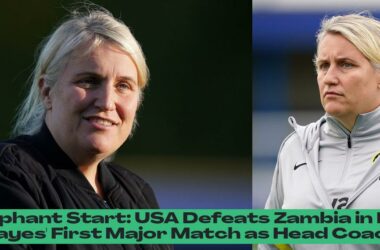The Second Apron: A New Era of Parity in the NBA?
The NBA offseason of 2024 will forever be etched in the minds of fans as the summer of the aprons. The new rules implemented in the 2023 collective bargaining agreement, particularly the second apron, have cast a long shadow over the league, forcing even the most affluent teams to adopt a more austere approach to team building. The Clippers bid farewell to Paul George, the Nuggets parted ways with Kentavious Caldwell-Pope, and the Warriors made the controversial decision to sign and trade Klay Thompson. These moves, while significant, have sparked considerable discontent among fans, who question the impact of these new rules on the league’s competitive landscape.
The reasons for this discontent are multifaceted. Firstly, the notion of teams disbanding for financial reasons is often seen as an unappealing outcome, particularly when it involves beloved players like Thompson, who could have potentially ended his career alongside his long-time teammates, Stephen Curry and Draymond Green, under a different set of rules. Secondly, the limitations imposed on teams with regard to player acquisition and improvement have raised concerns about the future of the NBA’s offseason drama, a key element that fuels the league’s excitement and engagement.
In response to these concerns, NBA commissioner Adam Silver addressed the new rules during the league’s summer league, defending the second apron as a catalyst for greater parity across the league. Silver acknowledged the potential for a less thrilling offseason from a fan perspective due to the limitations imposed by the second apron but emphasized that the primary goal is to create a more competitive environment where all 30 teams have a genuine chance to contend for a championship. He believes that the new system, while not intended to be boring, will ultimately benefit the league by fostering a more even playing field.
It’s worth noting that the NBA has witnessed a notable shift in recent years, with six different teams claiming the championship in the past six seasons. While it’s too early to attribute this parity solely to the new CBA rules, the introduction of the second apron has undoubtedly amplified the trend. The rationale behind this policy is that a healthy player-movement environment facilitates the emergence of new contenders by providing them with the necessary tools to improve their rosters. However, the opposite scenario could also unfold. If a dominant team emerges despite the new rules, it could face significant challenges in replicating its success due to the restrictive nature of the second apron.
The long-term impact of these new rules remains uncertain, but one thing is clear: they have already sparked significant debate and discussion within the league. NBA teams, known for their ingenuity and resourcefulness, are likely to devise creative strategies to navigate the limitations imposed by the second apron. This could lead to unexpected roster moves, innovative contract structures, and novel approaches to team building. The Thunder’s aggressive pursuit of Isaiah Hartenstein, despite having two promising young players, Chet Holmgren and Jalen Williams, on cheap rookie deals, suggests that teams might be compelled to make all-in moves earlier in the development cycle. The below-market extension awarded to Jalen Brunson could also redefine the way teams utilize max contracts.
The Second Apron: A Balancing Act Between Parity and Excitement?
The second apron, while intended to foster parity and make the NBA more competitive, has undeniably introduced new challenges for teams and fans alike. The reduced spending flexibility, particularly for teams with large payrolls, has led to a more cautious approach to player acquisition and a sense of uncertainty about the future of the league’s free agency period.
Some argue that the second apron will stifle the excitement of the offseason, as teams are less likely to make major moves due to financial constraints. Others contend that the emphasis on parity will ultimately benefit the league by creating a more unpredictable and engaging competitive landscape. The debate surrounding the second apron highlights the complex interplay between financial considerations, competitive balance, and the overall entertainment value of the NBA.
It is important to acknowledge that the NBA has a long history of navigating financial challenges and adapting to changing circumstances. The league has previously implemented rules to address issues such as salary cap loopholes and luxury tax penalties. The second apron is simply the latest iteration of this ongoing process. The league’s ability to adapt and evolve is a testament to its enduring popularity and its commitment to providing a compelling product for fans.
- Adam Silver defends the new CBA’s second apron as a tool to enhance parity in the NBA.
- The second apron has led to significant changes in team dynamics, with even affluent teams having to make austere decisions.
- Fans have expressed discontent over teams parting ways with players due to financial constraints imposed by the new rules.
- Limitations on player acquisition and improvement have raised concerns about the future excitement of NBA offseason drama.
- Silver emphasizes that the goal of the second apron is to create a more competitive environment where all 30 NBA teams have a genuine chance to compete for a championship.
- Despite potential drawbacks like a less thrilling offseason, Silver believes that greater parity will benefit the league in the long run.
- The NBA has seen increased parity in recent years, with six different teams winning championships in the past six seasons, potentially influenced by the new CBA rules like the second apron.
Navigating the Second Apron: Opportunities for Teams and Players
Despite the challenges presented by the second apron, there are also opportunities for teams and players to thrive in this new environment. Teams with a strong nucleus of young talent and a shrewd front office can capitalize on the limitations imposed on other teams. By developing and retaining young players, these teams can build a competitive roster without breaking the bank. The Thunder’s recent moves, acquiring a solid veteran in Hartenstein while retaining their young core, exemplify this strategy.
Players, particularly those in their prime, can also benefit from the second apron by gaining opportunities to join competitive teams. As teams become more cautious in their spending, players with proven track records and a willingness to accept below-market deals could find themselves in high demand. This could lead to a shift in the free agency landscape, where players prioritize playing time and team success over maximizing their salaries. The Brunson situation demonstrates that players can leverage their value to secure long-term contracts with teams that offer a competitive environment.
The Future of the NBA: Balancing Financial Stability with On-Court Excitement
The second apron represents a significant change for the NBA, and its long-term impact remains to be seen. The league is committed to fostering parity by creating a more level playing field, but this pursuit must be balanced with the need to maintain the excitement and entertainment value that fans have come to expect. There is a delicate balance to be struck between financial stability and on-court competition.
The second apron is a bold move by the NBA, and it is likely to have a profound impact on the league for years to come. It remains to be seen whether it will succeed in achieving its stated goals of greater parity and a more competitive landscape. However, one thing is certain: the second apron will force teams to adapt and innovate, leading to a new era of roster building and a more unpredictable and exciting NBA.









